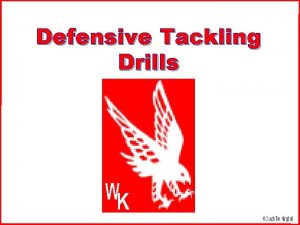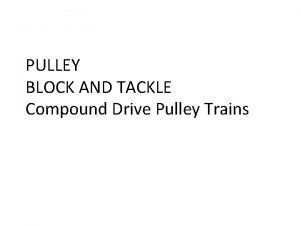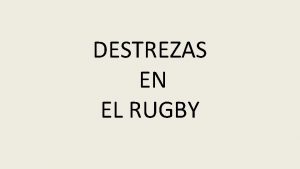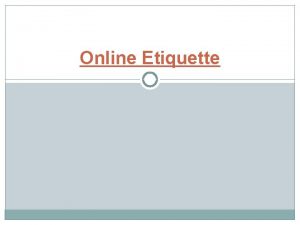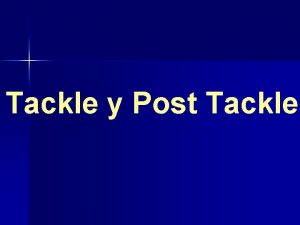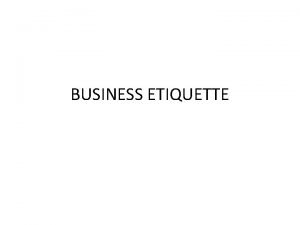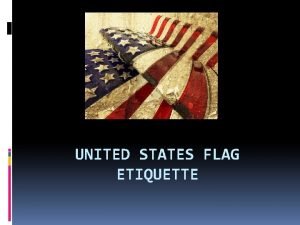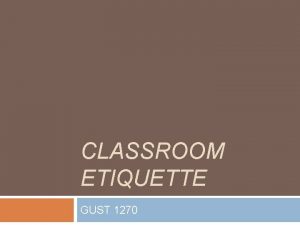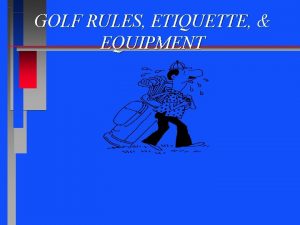History Safety Rules Etiquette Tackle Equipment Get Shooting












- Slides: 12


• • History Safety Rules & Etiquette Tackle & Equipment Get Shooting Scoring Tournament

HISTORY • The roots of Archery can be traced back as far as 25, 000 years ago. When early man began hunting with the bow and arrow it made him the most powerful animal on earth. According to the Encyclopedia Britannica, Archery’s importance as a cultural advance ranks with the art of making fire. • Archery has evolved through the ages from the Egyptian to modern times with each era adding valuable innovations and technology. Early Egyptian arrowheads were made of flint and bronze. The Assyrians discovered that more power and easier handling came with a shorter bow and the recurve bow was born. Moving the anchor point form the chest to the chin provided a much higher degree of accuracy was credited to the Roman’s. The bow and arrow was the principle weapon of national defense for several centuries in England. Genghis Khan conquered much of the known world using short powerful bows. For the Native American, archery was the primary means of hunting, safety, and survival until the English began colonization. After the bow’s replacement by guns as a weapon of war, archery became a pastime of skill and recreation. • Target archery competition dates back to the ancient Olympic games. Archery tournaments were held in England as part of community festivals as early as the 17 th century. We find archery in mythology, folklore, and legend such as Robin Hood and William Tell. • Archery became an official event in the modern Olympic Games from 1900 - 1920, it was reinstated in 1972. Although technology has greatly advanced the equipment of the modern archer the sport has essentially remained the same. •

ARCHERY SAFETY Respect your equipment. Be alert at all times. Be safety conscious at all times. Never shoot an arrow into the air. Cooperate with the range leader. Use good common sense. Do not point a “nocked” arrow at anyone! Wear appropriate clothing & shoes. Don’t take chances! Follow ALL whistle commands the first time!

• • • Safety is the most important of all rules. Any activity that is unsafe is against the rules. Personal courtesy & sportsmanship is to be practiced at all times. All equipment must be safety checked before each use. Any damaged or frayed equipment must be reported to the teacher immediately. Use arrows the correct length (or longer) for you. NEVER release a string without an arrow on it (Dry Fire). Practice drawing and anchoring without an arrow and let the string down slowly to brace height each time. Always wear an armguard and finger tab to prevent injury. Be aware of your surroundings - look where you are going when you are carrying arrows. Never shoot until the whistle command has been given. • • • Carry arrows with the points in the palm of your hand spread them out like a fan at the bottom. Shooters MUST straddle the shooting line. As soon as you are finished shooting place your bow on the bow rest and step back from the line. Never attempt to retrieve any arrow until the whistle command to retrieve has been given. Watch for arrows imbedded in the grass and pick them up. Never pull an arrow by the fletching (feathers). When removing arrows from the target place one hand on the target face and grasp the arrow with the other as close the point of entry as possible. Make sure no one is behind you and pull straight back. You are responsible for returning all equipment to the teacher ready to put away. ALWAYS FOLLOW THE WHISTLE COMMANDS

ANCHOR POINT ARCHER BOW ARM/HAND BRACE CREEPING DRAW DRY FIRE END HIT NOCKING OVERDRAW PLUCKING RANGE LEADER RETRIEVE SHOOTING LINE STANCE STRING FINGERS TARGET FACE TRAJECTORY A consistent support such as the chin, jaw, or nose to which the index finger of the string hand must be consistently brought back to at the end of the draw. A bowman or one who uses a bow. The hand arm that holds the bow while shooting. The act of stringing the bow. Allowing the point of the arrow to move forward before release. Pulling the string of the bow to a length of 28”. Drawing and releasing the string without an arrow. Numbers of arrows shot for a score (6 arrows). An arrow that pierces the scoring part of the target. Placing an arrow on the string to prepare to shoot. To draw so far back that the arrow tip falls of the rest. Pulling the string hand out and away from the anchor as you release. The place where you shoot. The person in supreme command of the range - THE TEACHER. To recover shot arrows (from the target or the grass). A line designating a distance from the target. You straddle this to shoot. . The proper body position used in shooting. The 3 fingers which are hooked around the string. The object on the range you are directed to shoot at. The scoring portion of the target. (Scoring area) The path of the arrow in flight.

The Archer’s Commandments • Thou shalt follow these commands… • “SHOOTERS TO THE LINE” (verbal) • “BOWS UP AND READY” (verbal) • 1 LONG WHISTLE = “SHOOT” • 3 SHORT WHISTLE BLASTS = STOP, LOOK, & LISTEN (Bows on rest, arrows in quiver) • “RETRIEVE ARROWS” (verbal) • DO NOT RESUME PREPARATION FOR SHOOTING UNTIL YOR ARE INSTRUCTED TO DO SO BY RANGE LEADER (TEACHER)

EQUIPMENT Arm Guard: Protects the bow arm from being hit by the string. Finger Tab: A flat piece of leather that is worn to protect the string fingers. Quiver: A case for holding arrows. We use ground quivers. Tackle: Your shooting equipment (bow, arrows, etc. ) ALWAYS… CHECK YOUR EQUIPMENT FOR SAFETY PUT YOUR EQUIPMENT AWAY CORRECTLY TELL THE TEACHER IF THERE ANY PROBLEMS

Tip String notch Upper Limb Grip String (Serving) Arrow Rest Brace Height Lower Limb Recurve

Fletching Nock Index feather Cresting Shaft Target Tip

• BOW ARM - lean against bow. • Fingers - relaxed • Wrist - straight • Elbow - locked in place (rolled under) • Shoulder - Down & back (Don’t grip tightly) • STRING FINGERS Don’t pinch the arrow between your fingers. • Hand - flat • Wrist - straight • Straight line from bend of elbow to tip of arrow. • Shoulder - down on draw (squeeze shoulder blades together).

WHITE - 1 POINT BLACK - 3 POINTS BLUE - 5 POINTS RED - 7 POINTS GOLD - 9 POINTS
 Get on get off
Get on get off One direction songs with poetic devices
One direction songs with poetic devices Pursuit angle tackling drills
Pursuit angle tackling drills Lifting machines chains ropes and lifting tackles
Lifting machines chains ropes and lifting tackles Chapter 10 section 2 protest resistance and violence
Chapter 10 section 2 protest resistance and violence Examples of block and tackle pulleys in real life
Examples of block and tackle pulleys in real life Chunk block and tackle
Chunk block and tackle Pulley train
Pulley train Wheel and axle simple machine formula
Wheel and axle simple machine formula Destrezas del rugby
Destrezas del rugby Penalty for illegal kicking or batting
Penalty for illegal kicking or batting Flaming netiquette
Flaming netiquette Manners matter
Manners matter


